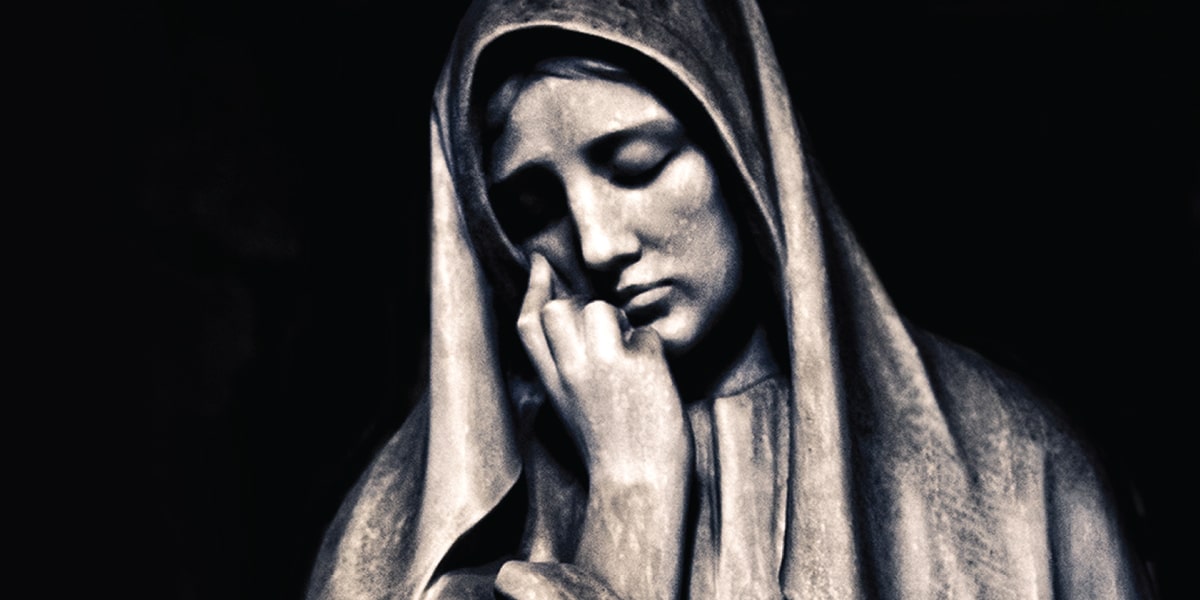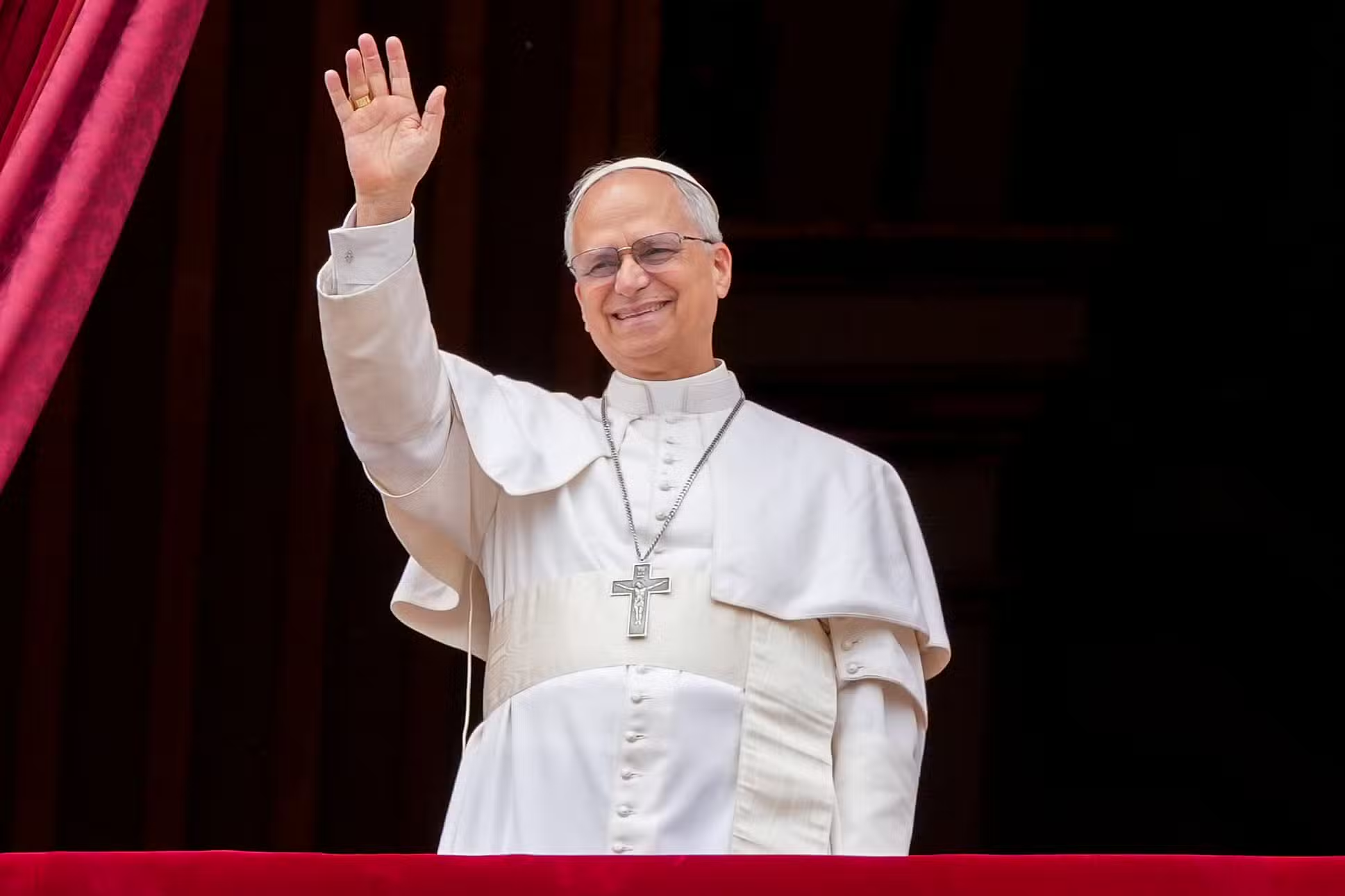She is beloved for her unshakable faith in her son, Jesus. But this Franciscan writer argues that Mary had a deeper understanding of his mission than we realize.
If the mystic is one who experiences in an extraordinary way the intimacy with God offered to everyone, then Mary is the model and pattern of the mystical life. She literally carried God in her womb and gave birth to him. Spiritual impregnation, gestation, and giving birth are the initial stages of the mystical life. God invades our lives, usually when we are not expecting it; we embrace that gift. Even if we are tempted to hoard it as ours alone, God will be born from us; we will serve others as a result of God’s own indwelling love.
Imagine Mary, a young girl at her prayers or perhaps performing her tasks or simply sitting and watching people pass by her window. Suddenly, there is a rush of wind like a flutter of wings, or a flash of light, and there is one like an angel addressing her: “Hail, favored one! The Lord is with you” (Lk 1:28).
There it is: The Lord is with you. What can this mean? Gabriel, as if knowing her thoughts, continues, “Do not be afraid, Mary, for you have found favor with God. Behold, you will conceive in your womb and bear a son, and you shall name him Jesus.” (Lk 1:30–31). Mary asks, “How can this be, since I have no relations with a man?” (Lk 1:34). And the angel responds in the next verse, “The holy Spirit will come upon you, and the power of the Most High will overshadow you.”
‘Behold, I am the Handmaid’
All mystics wonder what is happening to them when the Holy Spirit asks them to believe the seemingly impossible notion that God wants to enter their lives. They can, of course, refuse out of fear or doubt, and it is the glory of Mary that she does not refuse but says yes. Each true mystic who says yes to God at some point is sent forth into the world as the Father sent the Son to announce and build up the kingdom.
For Mary, this moment comes almost immediately when the angel announces that her aged cousin Elizabeth is in her sixth month of pregnancy (for nothing is impossible with God).
Mary says to the angel, “Behold, I am the handmaid of the Lord. May it be done to me according to your word” (Lk 1:38).
And Mary sets out into the hill country to minister to her cousin Elizabeth. There God will be revealed in Mary’s deep charity, as God had been revealed in her deep prayer. For when she enters Elizabeth’s house, the baby in Elizabeth’s womb leaps, and Elizabeth, filled with the Holy Spirit, cries out, “Most blessed are you among women, and blessed is the fruit of your womb. . . . Blessed are you who believed that what was spoken to you by the Lord would be fulfilled” (Lk 1:42, 45).
Mary Magnifies God
Mary’s decision and the truth of the angel’s message are confirmed, not when Mary is in contemplation, but when she is doing charity. The truth of the mystic’s visions and intimacy with God is proven in the selfless charity of the mystic’s life. Mary’s response to Elizabeth, her canticle, the Magnificat, distills the mystical life:
“My soul proclaims the greatness of the Lord; my spirit rejoices in God my savior. For he has looked upon his handmaid’s lowliness; behold, from now on will all ages call me blessed. The Mighty One has done great things for me, and holy is his name. His mercy is from age to age to those who fear him. He has shown might with his arm, dispersed the arrogant of mind and heart. He has thrown down the rulers from their thrones but lifted up the lowly.
“The hungry he has filled with good things; the rich he has sent away empty. He has helped Israel his servant, remembering his mercy, according to his promise to our fathers, to Abraham and to his descendants forever” (Lk 1:46–55).
As with every true prayer, the Magnificat does just that: It magnifies the Lord, focuses on the almighty, who does great things among us, the One whose name is holy.
As though already letting the child in her womb speak through her, Mary does more: She presages the major themes of Jesus’ future preaching and ministry. William Barclay, in his meditations on the Gospel of Luke, says that Mary ends her canticle with a moral, social, and economic revolution. The moral revolution is indicated in the line that God “scatters the proud in the plans of their hearts.”
We begin to change when our own plans scatter us, bring us down; God’s plans replace them—God’s plans, in the case of the mystic, are revealed in a vision or a voice speaking to the soul. God’s plans work a revolution in our lives. We begin to change because of what we have seen and heard.
The social revolution is heralded in the line, “He has brought down the powerful from their thrones / and lifted up the lowly.” The mystic sees what the world does not see, that the lowly are the real authority, for they represent the kingdom of God in its fullness. Jesus says in the first words of his first sermon, “Blessed are the poor in spirit, for theirs is the kingdom of heaven” (Mt 5:3). Jesus does not say, “Theirs will be the kingdom of heaven,” but “Theirs is the kingdom of heaven.”
This is a now promise. Where there is poverty of spirit, the real kingdom happens. How different this is from the kingdoms of earth that happen where there is power, not lowliness and littleness. How powerless the mystics are in terms of human power, how powerful in things of the spiritual kingdom within. The economic revolution is foretold when Mary says, “He has filled the hungry with good things, / and sent the rich away empty.”
Our Mother’s Canticle
The kingdom Jesus will preach and that his disciples will model distributes wealth to the poor, embracing poverty as the fast track into the kingdom. “If you wish to be perfect,” Jesus says to the rich, young man, “go, sell your possessions, and give to [the] poor, and you will have treasure in heaven. Then come, follow me” (Mt 19:21).
The medieval mystic Francis of Assisi will become the personification of this kind of gospel poverty, having been a rich young man who knew all too well that it is “easier for a camel to pass through the eye of a needle than for one who is rich to enter the kingdom of God” (Mt 19:24).
Mary’s life, like that of her son, will be a living out of her own canticle. She will enter into the mysteries of Christ’s life. Like the Christian mystics after her, she will participate in a more intense way in the very mystery that she is sharing.
As the model of intimacy with God, Mary will enter into the death and resurrection of her son. She will stand beneath the cross of his dying; she will rise with him body and soul in the mystery of her Assumption into heaven.








